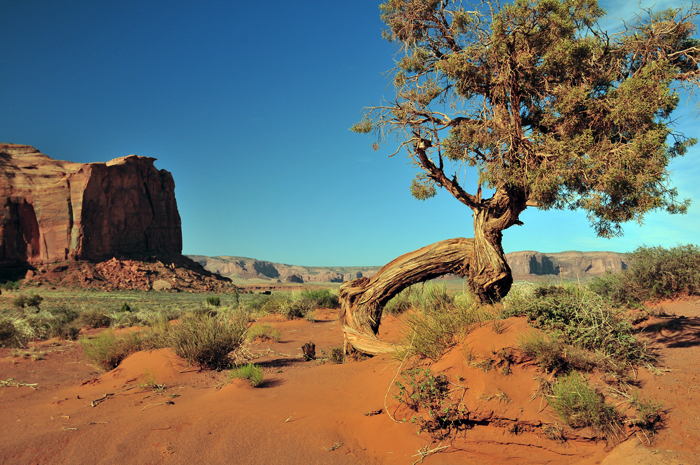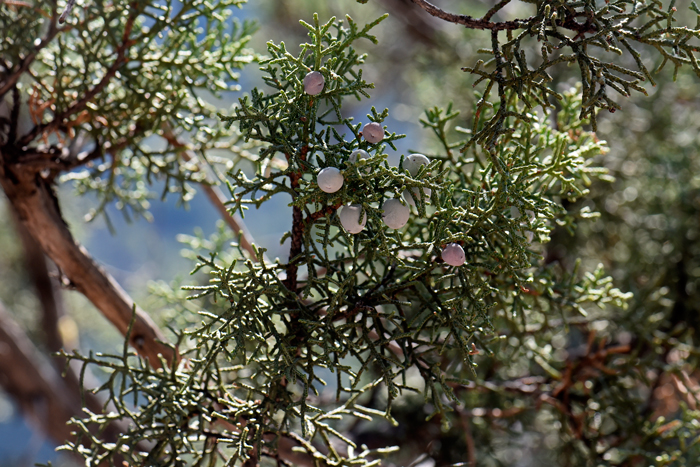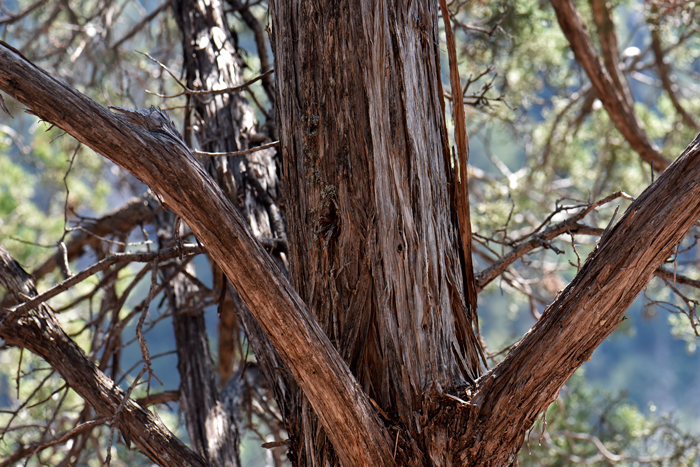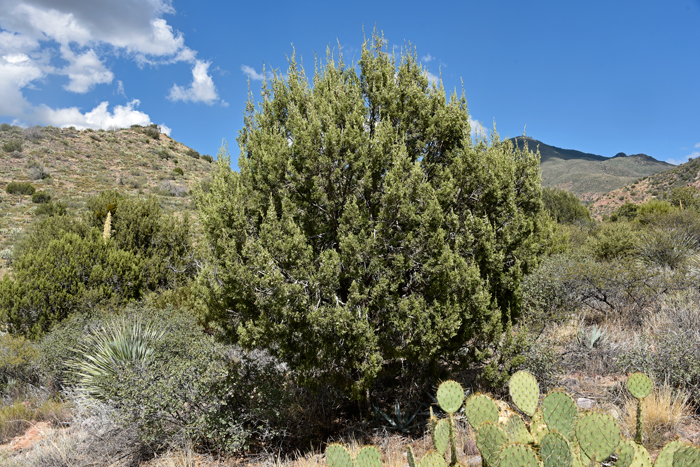Juniperus osteosperma, Utah Juniper




Scientific Name: Juniperus osteosperma
Common Name: Utah Juniper
Also Called: Spanish: Sabina Morena
Family: Cupressaceae, Cypress Family
Synonyms: (Juniperus californica subsp. osteosperma, Juniperus californica var. osteosperma, Juniperus californica var. osterosperma, Juniperus californica var. utahensis, Juniperus knighti, Juniperus knightii, Juniperus megalocarpa, Juniperus monosperma var. knightii, Juniperus occidentalis var. utahensis, Juniperus utahensis, Juniperus utahensis var. megalocarpa, Sabina osteosperma, Sabina utahensis)
Status: Native
Duration: Perennial
Size: Up to 20 feet tall, rarely taller.
Growth Form: Shrub, Tree; usually with a single trunk; rounded crown; branches ascending to erect, branchlets erect; bark gray-brown, weathering ash-white, ex-foliating in thin gray-brown-strips.
Leaves: Green, light yellow; decussate or tricussate, closely appressed, scale-like, gland obscure.
Flower Color: Non-flowering species; cones only; gymnosperm; usually monecious; pollen and seed cones terminal; seed cones globose, green, maturing brown-blue to usually red-brown in one to two years, dry, hard, fibrous.
Flowering Season: Cones; Non-flowering gymnosperm.
Elevation: 3,000 to 7,800 feet.
Habitat Preferences: Dry rocky plains and plateaus, juniper and pinyon-juniper woodland, pine-oak forest, grasslands.
Recorded Range: Utah Juniper is found primarily in the southern and northwestern United States in AZ, CA, CO, ID, MT, NM, NV, UT, WY.
North America & US County Distribution Map for Juniperus osteosperma.
U.S. Weed Information: No information available.
Invasive/Noxious Weed Information: No information available.
Wetland Indicator: No information available.
Threatened/Endangered Information: In North America, Utah Juniper, Juniperus osteosperma is "Protected as a Cactus, Yucca or Christmas Tree" by the State of Nevada.
In the Southwestern United States: Arizona and New Mexico each have 8 species of Juniperus, California has 5 species, Nevada has 6 species, Texas has 8 species, Utah has 4 species. All data is approximate and subject to taxonomic changes.
Comments: Utah Juniper wood does not readily decay and has been used for construction particularly fence posts. It makes excellent firewood with its distinctive popular smell, flavor and long burning coals. It is sometimes used for Christmas trees and is one of the most common Junipers in Arizona. This species is important to wildlife for cover and food and is used by many birds and wildlife including large and small mammals.
For a comprehensive thoroughly documented review of Juniperus osteosperma see the USDA USFS Fire Effects Information System, or FEIS.
In Southwest Desert Flora also see: California Juniper, Juniperus californica, Redberry Juniper, Juniperus coahuilensis, Alligator Juniper Juniperus deppeana, Oneseed Juniper, Juniperus monosperma, and Arizona Cypress, Cupressus arizonica.
Utah Juniper has been used for food and medicinal purposes by southwestern United States indigenous peoples.
See complete listing of ethno-botanical uses at Native American Ethnobotany, University of Michigan, Dearborn.

